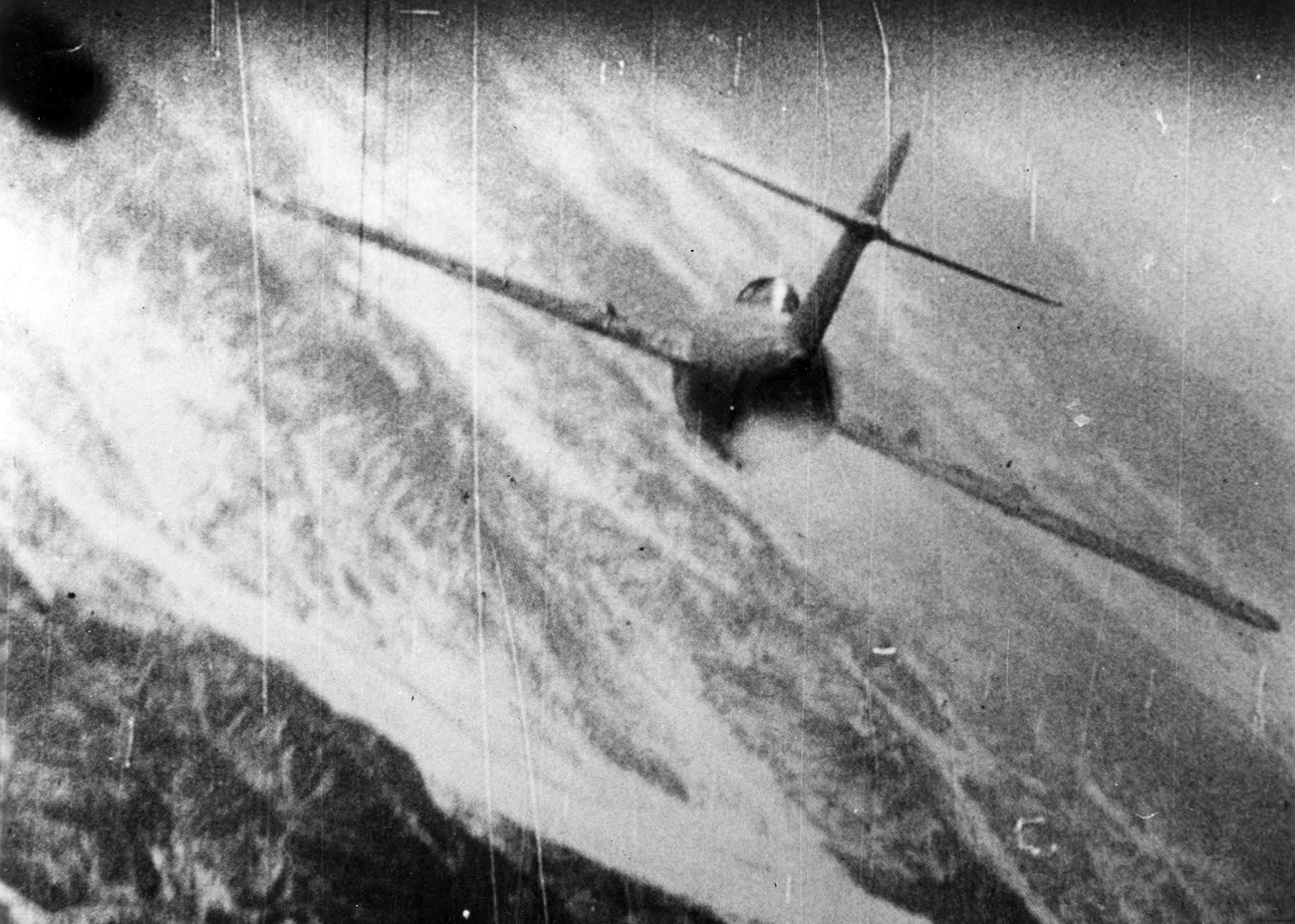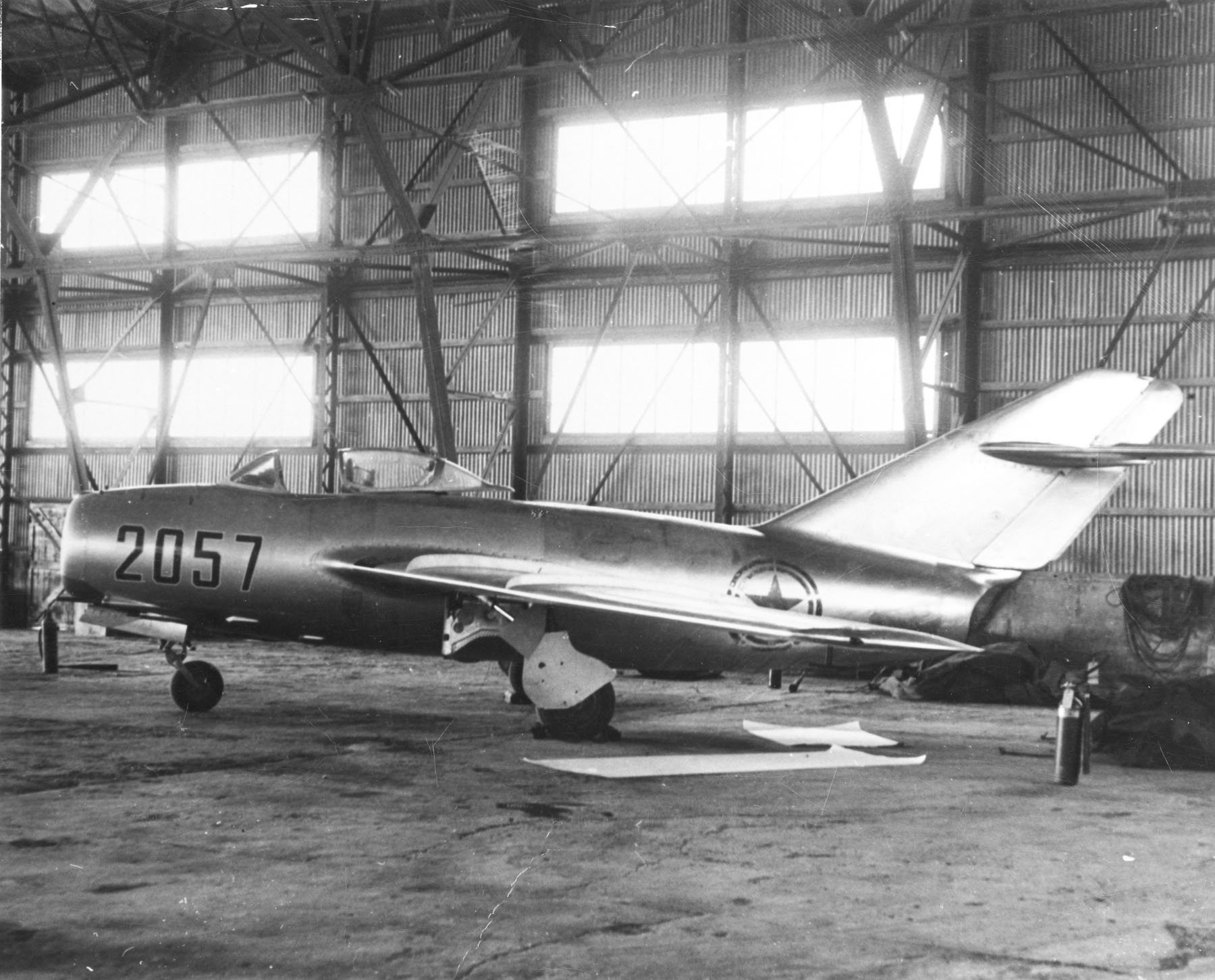
Declassified Soviet archives show a new picture about the air war over Korea in the 1950s.
USAFThe fog of war leads to all sorts of claims and counterclaims. Over time as military historians are able to get their hands on declassified war records from all sides involved, we get a more realistic picture of what really happened. The 1950-53 Korean War was unique because most of the aerial combat was between Russian and American pilots rather than among the Koreans. The conflict is also remarkable for the wild and preposterous claims the U.S. military made during and after the conflict.
In western publications of the 1960s the Americans claimed the ratio between the shot-down American and Russian MiGs was 1:14. That is, for every U.S., British and Australian jet lost in combat, the Russians were said to have lost 14 planes. During the next two decades as the war hysteria ebbed, the ratio was revised down to 1:10 but never below 1:8.
When the Russians declassified their archives after the end of the Cold War, and ex-Soviet pilots were freely able to present their side of the story, the West’s story could no longer hold up. Former fighter pilot Sergei Kramarenko writes in his gripping book, ‘Air Combat Over the Eastern Front and Korea’ that according to the most realistic (western) researchers, “the ratio of jet fighters shot down in engagements between the Soviet and American Air Forces was close to 1:1”.
But even this new parity accepted by western writers and military historians is nowhere near the truth. In reality, the air war over Korea was a bloodbath for the western air forces. It is a story that is well-hidden for obvious reasons – pride, prestige and the traditional western resistance to admit that the Russians won. By a wide margin.
Soviet leader Joseph Stalin had no intention of entering the war in Korea. World War II was too recent a memory and Moscow did not want a conflict with the West that could lead to another global war. So initially it was just China that militarily supported the North Koreans. But as the western armies – nominally under UN command – threatened to overrun the entire peninsula and seeing the quality and shortage of Chinese pilots, Stalin took the decision to involve his air force in the war.
However, in order to keep Moscow’s involvement a secret, Stalin imposed certain limitations on the Soviet pilots. One, they would fly under the markings of the Chinese People's Liberation Army Air Force or North Korean Peoples' Army Air Force.
Secondly, while in the air, the pilots would communicate only in Mandarin or Korean; the use of Russian was banned. And finally, Russian pilots would under no circumstances approach the 38th Parallel (the border between the two Koreas) or the coastline. This was to prevent their capture by the Americans.
The last restriction was crippling – it meant Russian pilots were prevented from giving chase to enemy aircraft. Since aircraft are at their most vulnerable while fleeing (because they have either run out ammunition, are low on fuel, or experiencing technical trouble), it meant Russian pilots were denied easy kills. Hundreds of western fighters were able to escape into South Korea because the Russians turned back as they neared the coastline or the border.
Despite such limitations, Russia came out on top. According to Karamarenko, during the 32 months that Russian forces were in Korea, they downed 1250 enemy planes. “Of that number the (Russian) corps’ anti-aircraft artillery shot down 153 planes and the pilots killed 1097,” he writes. In comparison, the Soviets lost 319 MiGs and Lavochkin La-11s.
Karamarenko adds: “We were sure that the corps’ pilots had shot down a lot more enemy planes than the 1097 credited but many of those had fallen into the sea of crashed during landing in South Korea. Many of them had returned him so badly damaged they simply had to be written off, for it would have been impossible to fix them up.”
The Korean War produced some of the most enthralling dogfights seen in the history of modern air combat. A lot of the action took place in "MiG Alley" – the name given by western pilots to the northwestern portion of North Korea, where the Yalu River empties into the Yellow Sea. It became the site of numerous dogfights. It was the site of the first large-scale jet-vs-jet air battles between Russian MiG-15s and U.S. F-86 Sabres.
The turning point of the war came in October 1951. American aerial reconnaissance had detected construction work on 18 airfields in North Korea. The largest of these was in Naamsi, which would have concrete runways and be capable of staging jet aircraft.
Yuri Sutiagin and Igor Seidov explain in the exhaustive book ‘MiG Menace Over Korea’ the implications of the runway expansion program. “The new airfields, located deep in North Korean territory, would permit the transfer of fresh MiG-15 unites to them, which would expand the area of operation of these dangerous fighters and jeopardize the operation of the UN forces. In the event, the so-called MiG Alley would extend all the way down to the 38th Parallel, and potentially expose the UN ground forces to continuous air attacks.”
On October 23, 1951 – now known as Black Tuesday – the western air forces cobbled together a vast armada of 200 jet fighters (F-86 Sabres, F-84s, F-80s and British-built Gloster Meteor IVs) and nearly two dozen B-29 Superfortress bombers (the same type that dropped the atomic bombs on Japan). The mission profile of this concentrated attack was to disrupt the flow of supplies to Korean and Chinese forces and to put the airbases at Naamsi and Taechon in North Korea out of action.
To counter this threat the Russians organised two fighter air divisions. The 303rd comprising fifty-eight MiG-15s formed the first echelon and was assigned to attack the primary group of enemy bombers and fighter-bombers. The 324th division had twenty-six MiG-15s and comprised the second echelon. It was responsible for reinforcing the battle and covering the 303rd’s exit from battle.
Focus and discipline were critical to successfully tackling the bomber threat. The Russian strategy was to ignore the fighter escorts and go straight for the slower Superfortresses. As the MiGs were heading to clash with the Superfortresses they caught sight of a group of slow British Meteors. Some of the Russian pilots were tempted by these enticing targets, but commander Nikolai Volkov said: “We’re going after the big ones.”
Like orca whales circling around and then swallowing their prey, the MiGs tore into the B-29 formations. Some of the Russian pilots attacked the American bombers vertically from below, seeing the B-29s explode in front of their eyes. It was almost a turkey shoot, as the crew – 12 to 13 airmen – of the stricken bombers bailed out one by one.
The Russians claimed the destruction of ten B-29s – the highest percentage of US bombers ever lost on a major mission – while losing one MiG. However, Kramarenko says some pilots claimed that twenty B-29s were downed in the week of October 22-27. Plus the USAF lost four F-84 escort fighters.
 MiG-15 in hangar 1953 / Wikipedia
MiG-15 in hangar 1953 / Wikipedia
The Americans admit to three bombers downed in the air, while another five B-29s and one F-84 were seriously damaged and later written off. “Even so, these were quite painful losses for the American command,” write Sutiagin and Seidov.
Commander Lev Shchukin recalls Black Tuesday: “They were trying to intimidate us. They were perhaps thinking that we would be frightened by their numbers and would flee, but instead we met them head-on.”
Clearly, Russian pilots had internalised what Sergei Dolgushin, a Russian Air Force ace with 24 victories in WW II, said is a prerequisite to be a successful fighter pilot: “a love of hunting, a great desire to be the top dog”.
The Russians nicknamed the B-29s “Flying Shacks” as these lumbering birds burned so easily and well.
Former USAF pilot Lt-Col Earl McGill sums up the battle in 'Black Tuesday Over Namsi: B-29s vs MiGs': "In percentages, Black Tuesday marked the greatest loss on any major bombing mission in any war the United States has ever engaged in, and the ensuing battle, in a chunk of sky called MiG Alley, still ranks as perhaps the greatest jet air battle of all time."
The air battle of Black Tuesday would forever change the USAF’s conduct of strategic aerial bombardment. The B-29s would no longer fly daytime sorties into MiG Alley. North Korean towns and villages would no longer be carpet bombed and napalmed by the Americans. Thousands of civilians were out of the firing line.
But most importantly, the bravery and skills of the Russian detachment to Korea may have prevented another world war. Kramarenko explains: “The B-29 was a strategic bomber, in other words, a carrier of atomic bombs. In a Third World War – on the brink of which we were – these bombers were meant to strike at the cities of the Soviet Union with nuclear bombs. Now it turned out these huge planes were defenceless against jet fighters, being far inferior to them in speed and armament.”
Clearly, none of the B-29s had a chance of flying more than 100 km into the vastness of the Soviet Union and remaining unscathed. “It can be said with confidence that the Soviet airmen who fought in Korea, causing so much damage to the enemy’s bomber aviation, had put off the threat of a Third World War, a nuclear war, for a long time,” says Kramarenko.
A few days after Black Tuesday, McGill was seated in the co-pilot's seat of a B-29 on the tarmac at Okinawa air base, waiting for the takeoff order that would send his bomber deep into MiG Alley. Instead of the usual pre-flight banter, the air crew sat silent and glum, as they felt they were going back "to our certain destruction," when news arrived that the mission was cancelled.
McGill explains the feeling inside the aircraft: "Those minutes before the reprieve taught me the meaning of fear, which I have never experienced since, not even now as life grows short."
Rakesh Krishnan Simha is a New Zealand-based journalist and foreign affairs analyst, with a special interest in defence and military history. He is on the advisory board of Modern Diplomacy, a Europe-based foreign affairs portal. He tweets at @byrakeshsimha. The views expressed here are the author’s own and do not necessarily reflect those of RBTH.
If using any of Russia Beyond's content, partly or in full, always provide an active hyperlink to the original material.
Subscribe
to our newsletter!
Get the week's best stories straight to your inbox